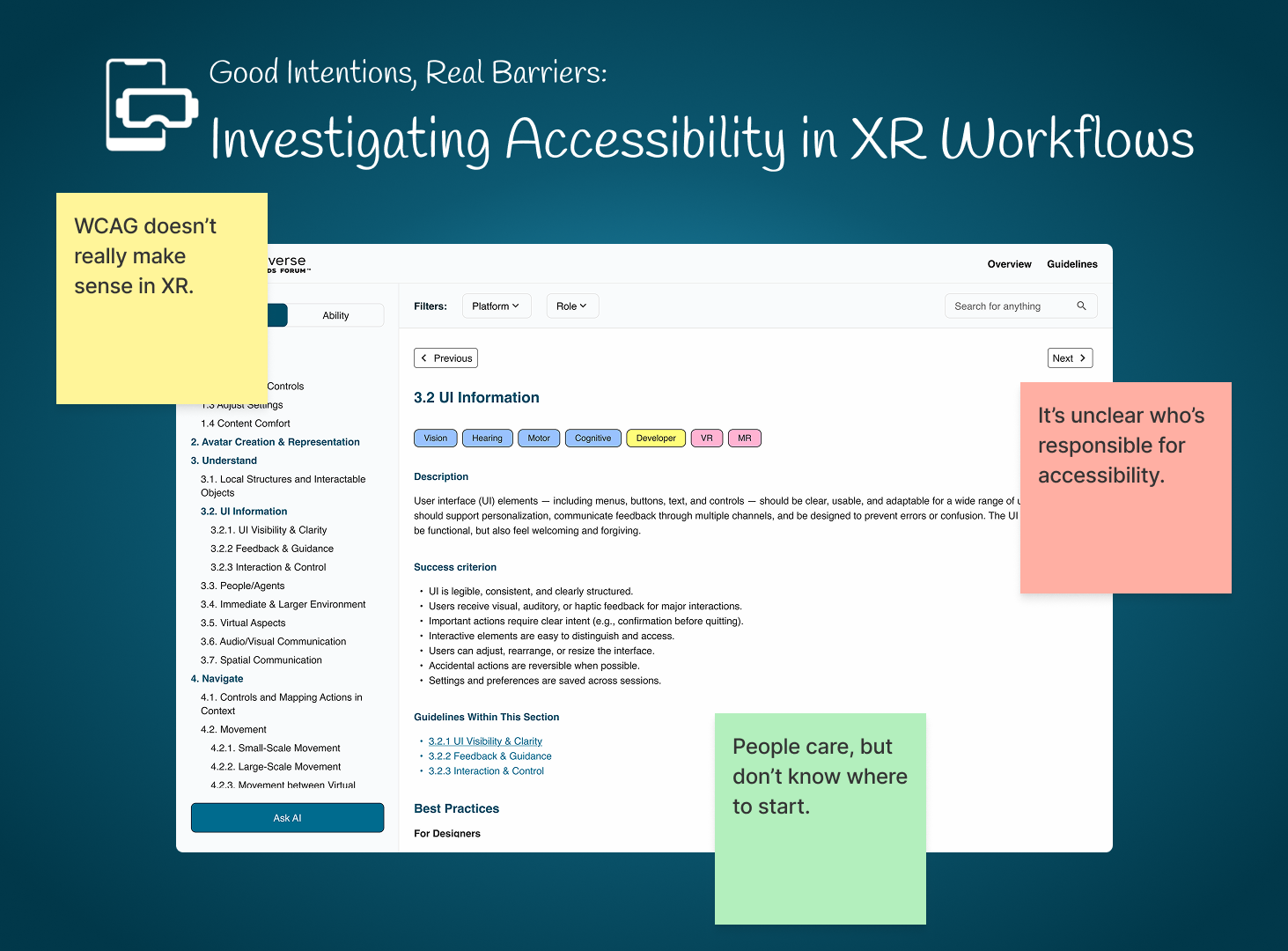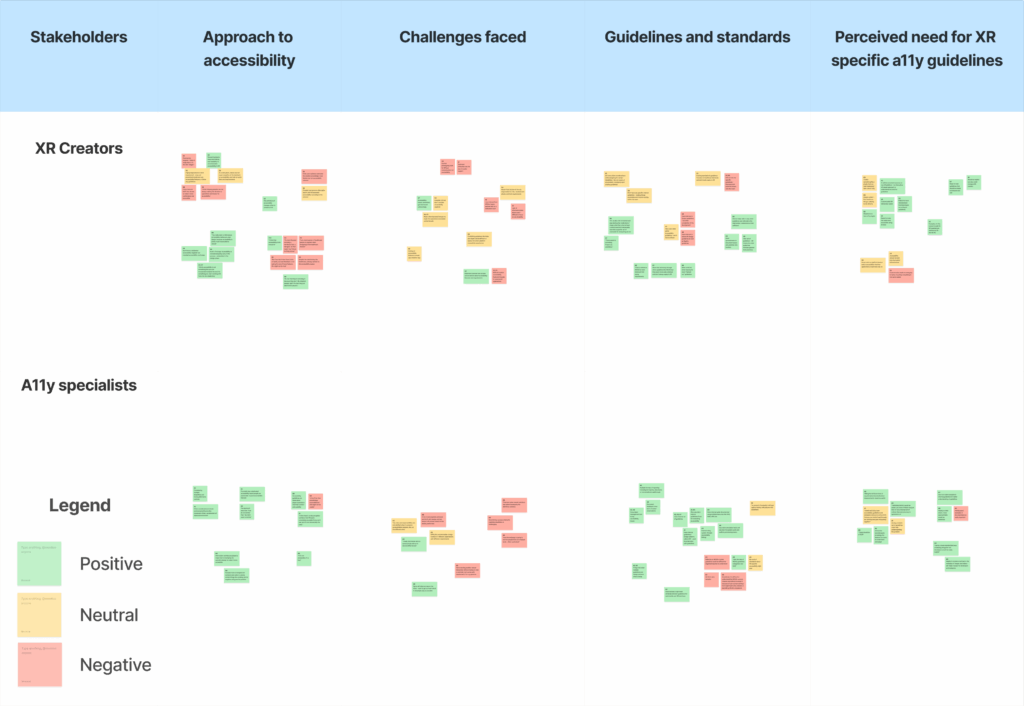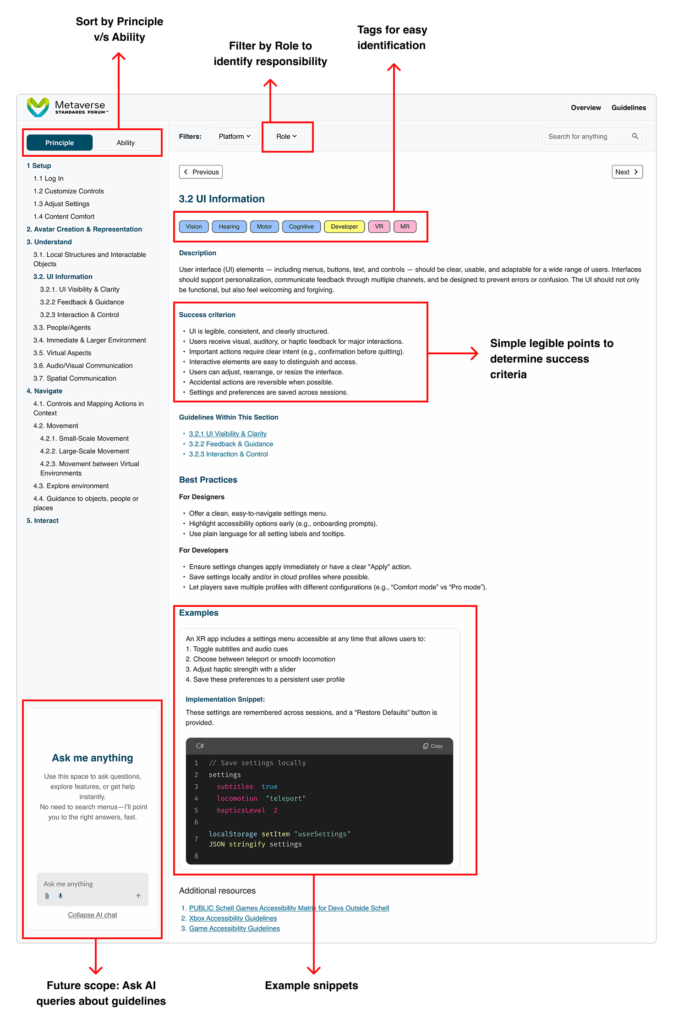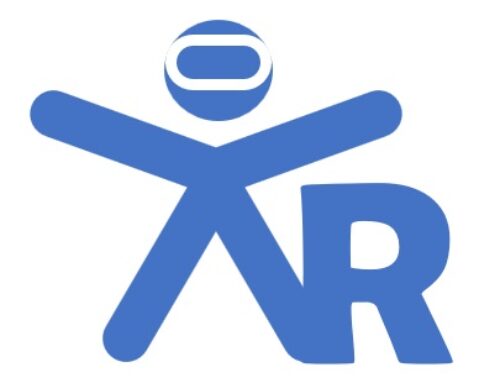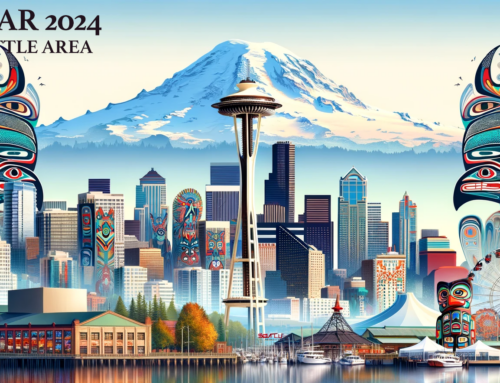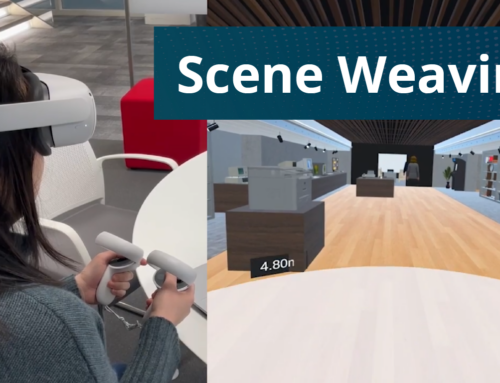As XR technologies evolve, ensuring accessibility requires not just awareness, but practical, embedded support that fits real-world workflows. To explore this challenge, I conducted 21 semi-structured interviews with XR creators and accessibility specialists. These conversations revealed several recurring barriers: accessibility is often introduced too late due to tight deadlines or unclear ownership; existing standards like WCAG are seen as too web-focused for immersive contexts; and there is limited shared language or tooling to support collaboration across roles.
To make sense of these findings, I created a thematic matrix comparing insights across disciplines, surfacing key pain points and opportunities. Building on this analysis, I designed a clickable guideline interface prototype that helps teams explore accessibility considerations in a more structured and actionable way. The interface allows users to filter guidance by user ability, platform, or team role, and includes practical tips, success criteria, and real-world examples. A dedicated section, “How it helps different disabilities,” supports more empathetic and user-aware decision-making.
While still an early-stage concept, the prototype shifts accessibility from a static checklist to a dynamic, role-aware reference that better fits the needs of XR creators. It offers a foundation for future tools that can embed accessibility more seamlessly into design and development workflows.
Thematic matrix mapping participant quotes by stakeholder group and theme. The sticky notes are color-coded to reflect the tone of participant quotes—red indicates negative sentiments or challenges, green highlights positive experiences or opinions, and yellow represents neutral or factual statements. Full text available in report appendix.
About the Author
Mrunmai Abhyankar is a UX Designer and Researcher with a background in Computer Engineering and a Master’s in HCI from UT Austin. Specializing in accessibility, user research, and interaction design, Mrunmai combines technical expertise with user-centered design principles to craft intuitive, inclusive digital experiences.
